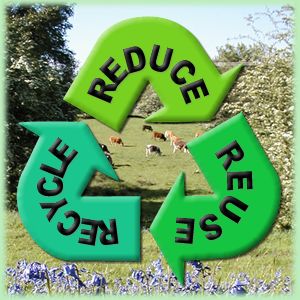I am seriously impressed by the magnitude of efforts being under taken by my University to recycle, reduce and reuse non-biodegradable waste throughout the campus and even outside it to some extent. Every campus building has separate bins for plastics, paper, glass and other trash. Even the dorm rooms have separate bins for each type of waste. Everywhere recycled tissue papers are used and various volunteering projects involving cleaning parks, rivers etc. are taken up. There are a number of student groups that focus on sustaining the environment and how can we as students contribute to the cause.
There is a re-use program, which relieves 250 university buildings of unwanted materials, fixtures and supplies. They redistribute furniture and equipment valued at over $200,000 to U of M departments each year. They recycle unwanted steel, aluminum, wood, cardboard and paper. The U of M recycling program collects wastes separately using the color coded QUAD system.
An event called, Beautiful U Day brings together students, faculty and staff for beautification and sustainability events on all University of Minnesota campuses. Last year’s Twin Cities campus event introduced the It All Adds Up program’s energy conservation initiative, setting the goal of reducing energy consumption by five percent by the end of 2010. This goal was surpassed in March. The It All Adds Up message is very popular on campus, seen on bright green bands and T-shirts. During our welcome week we were taken to Saint Paul campus where we signed up for their mailing list and sign a pledge in which we were asked about the different ways in which I will be contributing towards sustaining the environment. We were also given used folders that are really very useful to me. I said that I will be taking the stairs instead of elevators whenever possible (the fact that I live on the second floor helps in maintaining it). Also that I’d be using the dorm room bins and throw the garbage accordingly. I’d try and save as much electricity as I can. I make sure to switch off lights and other electric appliances when not needed. I know that this isn’t much but I’ve seen that people here keep the lights on even when they are not in the room, because they don’t care and they don’t have to pay their electric bills separately. But then coming from a place like India where lots of places still do not have access to electricity, and power cuts are really common, I am aware of the need to use it judiciously.


